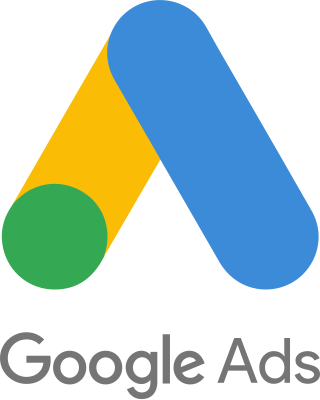
In mass communication, digital media is any communication media that operates in conjunction with various encoded machine-readable data formats. Digital content can be created, viewed, distributed, modified, listened to, and preserved on a digital electronic device, including digital data storage media and digital broadcasting. Digital is defined as any data represented by a series of digits, and media refers to methods of broadcasting or communicating this information. Together, digital media refers to mediums of digitized information broadcast through a screen and/or a speaker. This also includes text, audio, video, and graphics that are transmitted over the internet for viewing or listening to on the internet.
Disinformation is misleading content deliberately spread to deceive people, or to secure economic or political gain and which may cause public harm. Disinformation is an orchestrated adversarial activity in which actors employ strategic deceptions and media manipulation tactics to advance political, military, or commercial goals. Disinformation is implemented through attacks that "weaponize multiple rhetorical strategies and forms of knowing—including not only falsehoods but also truths, half-truths, and value judgements—to exploit and amplify culture wars and other identity-driven controversies."

A browser game is a video game that is played via the internet using a web browser. They are mostly free-to-play and can be single-player or multiplayer. Alternative names for the browser game genre reference their software platform used, with common examples being Flash games and HTML5 games.

Google Ads, formerly known as Google Adwords, is an online advertising platform developed by Google, where advertisers bid to display brief advertisements, service offerings, product listings, and videos to web users. It can place ads in the results of search engines like Google Search, mobile apps, videos, and on non-search websites. Services are offered under a pay-per-click (PPC) pricing model, and a cost-per-view (CPV) pricing model.

Misinformation is incorrect or misleading information. Misinformation and disinformation are not interchangeable terms: Misinformation can exist with or without specific malicious intent whereas disinformation is distinct in that the information is deliberately deceptive and propagated. Misinformation can include inaccurate, incomplete, misleading, or false information as well as selective or half-truths. In January 2024, the World Economic Forum identified misinformation and disinformation, propagated by both internal and external interests, to "widen societal and political divides" as the most severe global risks within the next two years.

Social media are interactive technologies that facilitate the creation, sharing and aggregation of content amongst virtual communities and networks. Common features include:

Influencer marketing is a form of social media marketing involving endorsements and product placement from influencers, people and organizations who have a purported expert level of knowledge or social influence in their field. Influencers are someone with the power to affect the buying habits or quantifiable actions of others by uploading some form of original—often sponsored—content to social media platforms like Instagram, YouTube, Snapchat, TikTok or other online channels. Influencer marketing is when a brand enrolls influencers who have an established credibility and audience on social media platforms to discuss or mention the brand in a social media post. Influencer content may be framed as testimonial advertising, according to the Federal Trade Commission in the United States. The FTC started enforcing this on a large scale in 2016, sending letters to several companies and influencers who had failed to disclosed sponsored content. Many Instagram influencers started using #ad in response and feared that this would affect their income. However, fans increased their engagement after disclosure, being happy that they were landing such deals. This success led to some creators creating their own product lines in 2017. Some influencers fake sponsored content to grain credibility and promote themselves. Backlash to sponsored content became more prominent in mid-2018, leading to many influencers to focus instead on authenticity.

Digital journalism, also known as netizen journalism or online journalism, is a contemporary form of journalism where editorial content is distributed via the Internet, as opposed to publishing via print or broadcast. What constitutes digital journalism is debated by scholars; however, the primary product of journalism, which is news and features on current affairs, is presented solely or in combination as text, audio, video, or some interactive forms like storytelling stories or newsgames, and disseminated through digital media technology.

Digital footprint or digital shadow refers to one's unique set of traceable digital activities, actions, contributions, and communications manifested on the Internet or digital devices. Digital footprints can be classified as either passive or active. The former is composed of a user's web-browsing activity and information stored as cookies. The latter is often released deliberately by a user to share information on websites or social media. While the term usually applies to a person, a digital footprint can also refer to a business, organization or corporation.

An Internet celebrity, also referred to as an Internet personality, is an individual who has acquired or developed their fame and notability on the Internet. The growing popularity of social media provides a means for people to reach a large, global audience, and internet celebrities are commonly present on large online platforms such as Facebook, Instagram, TikTok, and YouTube, which primarily rely on user-generated content. Some Internet celebrities are known as social media influencers, or simply influencers, due to their social influence online.

Social media marketing is the use of social media platforms and websites to promote a product or service. Although the terms e-marketing and digital marketing are still dominant in academia, social media marketing is becoming more popular for both practitioners and researchers.
Communication ethics is a sub-branch of moral philosophy concerning the understanding of manifestations of communicative interaction.
Social media and political communication in the United States refers to how political institutions, politicians, private entities, and the general public use social media platforms to communicate and interact in the United States.
Google PageSpeed is a family of tools by Google, Inc. designed to help optimize website performance. It was introduced at a Developer Conference in 2010. There are four main components of PageSpeed family tools:
Social media use in politics refers to the use of online social media platforms in political processes and activities. Political processes and activities include all activities that pertain to the governance of a country or area. This includes political organization, global politics, political corruption, political parties, and political values. The media's primary duty is to present us with information and alert us when events occur. This information may affect what we think and the actions we take. The media can also place pressure on the government to act by signaling a need for intervention or showing that citizens want change
Disinformation attacks are strategic deception campaigns involving media manipulation and internet manipulation, to disseminate misleading information, aiming to confuse, paralyze, and polarize an audience. Disinformation can be considered an attack when it occurs as an adversarial narrative campaign that weaponizes multiple rhetorical strategies and forms of knowing—including not only falsehoods but also truths, half-truths, and value-laden judgements—to exploit and amplify identity-driven controversies. Disinformation attacks use media manipulation to target broadcast media like state-sponsored TV channels and radios. Due to the increasing use of internet manipulation on social media, they can be considered a cyber threat. Digital tools such as bots, algorithms, and AI technology, along with human agents including influencers, spread and amplify disinformation to micro-target populations on online platforms like Instagram, Twitter, Google, Facebook, and YouTube.
Algorithmic radicalization is the concept that recommender algorithms on popular social media sites such as YouTube and Facebook drive users toward progressively more extreme content over time, leading to them developing radicalized extremist political views. Algorithms record user interactions, from likes/dislikes to amount of time spent on posts, to generate endless media aimed to keep users engaged. Through echo chamber channels, the consumer is driven to be more polarized through preferences in media and self-confirmation.

Renée DiResta is a professor, writer and former research manager at Stanford Internet Observatory (SIO). DiResta has written about pseudoscience, conspiracy theories, terrorism, and state-sponsored information warfare. She has also served as an advisor to the U.S. Congress on ongoing efforts to prevent online and social media disinformation.
In internet slang, rage-baiting is the manipulative tactic of eliciting outrage with the goal of increasing internet traffic, online engagement, revenue and support. Rage baiting or farming can be used as a tool to increase engagement, attract subscribers, followers, and supporters, which can be financially lucrative. Rage baiting and rage farming manipulates users to respond in kind to offensive, inflammatory headlines, memes, tropes, or comments.










